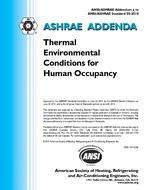Part I of this paper established the theoretical feasibilityof using transient tests on energy wheels to determine theirsensible energy and latent energy (or moisture transfer) effectiveness.
This paper briefly describes the physical transient testfacility, instrumentation, and tests performed on a stationaryenergy wheel to obtain the heat transfer and adiabatic moisturetransfer time constants and weighting factors. Using the theoreticalmodel in Part I, these experimentally determined characteristicfactors are then used to predict the sensible andlatent effectiveness of an energy wheel rotating at a selectedspeed. These predicted effectiveness results are shown to agreewith the corresponding measured data for effectiveness withinthe uncertainty bounds. Comparisons of predicted effectivenessand computer simulations also show good agreementexcept for very low air face velocities. It is concluded that transienttest methods could be used to supplement or replacesteady-state effectiveness tests.
Using geometric data and physical thermal properties ofeach energy wheel, the measured first time constants obtainedfor heat transfer are compared to the theoretical prediction inPart I, with each showing agreement within the uncertaintybounds. The measured first time constants for moisture transferare used to determine the desiccant coating efficacy coefficient,again indicating results consistent with the theory inPart I. It is concluded that the theoretical equations for transientheat and moisture transfer can be used to extrapolatemeasured transient data for similar energy wheels and providedesign guidelines for energy wheels.
Citation: ASHRAE Trans., vol. 112, pt. 2, paper no. QC-06-010, p. 103-115
Product Details
- Published:
- 2003
- Number of Pages:
- 13
- File Size:
- 1 file , 1.6 MB
- Product Code(s):
- D-28731


